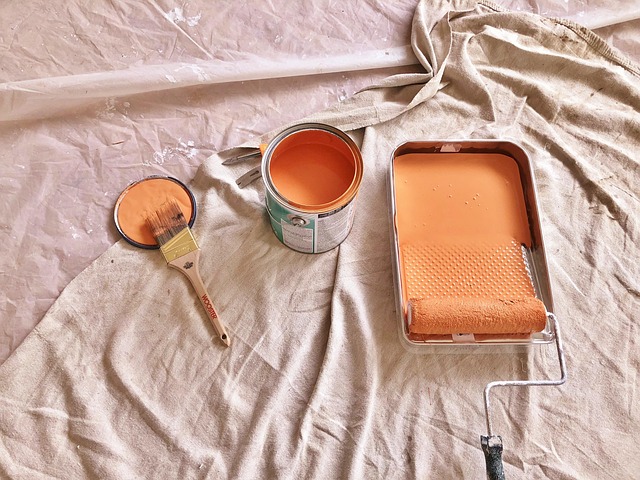Introduction: Why Budget-Friendly Upgrades Matter
Home improvement isn’t the same game it was a few years ago. Material costs are up. Labor is harder to book—and pricier when you can. The result? Smart homeowners are looking at smaller projects with lasting value. That’s not cutting corners. That’s a better strategy.
Affordable upgrades aren’t about being cheap. They’re about spending wisely. A fresh coat of paint, a new light fixture, or killer storage setup can do more for your space than a full remodel that drains your savings. These small shifts say a lot about how you live—and they show up where it counts: function, comfort, and resale.
The real goal here is ROI—return on investment. But it’s also peace of mind. Done right, budget-friendly improvements don’t just boost your home’s bottom line. They make it easier to enjoy the place you already pay for. That’s the sweet spot worth aiming for.
Project 1: Fresh Paint, Fresh Feel
If you’re only doing one upgrade this year, make it paint. It’s cheap, fast, and makes an oversized impact. Start with high-traffic zones—entryways, living rooms, kitchens. These are the spaces people notice first—and they soak up wear and tear quicker.
Bathrooms and bedrooms are next in line. In smaller rooms, a fresh coat can make the space feel new without knocking down a single wall. Don’t forget the ceiling. Paint it the same color as the walls in small rooms to make the space feel taller.
Color-wise, stick with the modern classics. Soft, warm whites. Earthy greens. Muted navy. Greige. These tones aren’t just trendy—they have staying power, and real estate pros swear by them for selling. Avoid anything too loud or niche unless it’s easy to repaint later.
Watch your technique. Rushing leads to visible roller lines, missed spots, and drips that look like regret. Use painter’s tape, don’t skip primer, and choose the right finish—eggshell for walls, semi-gloss for trim. Pros will tell you: it’s not the color that separates amateur from elegant, it’s the prep work.
A few cans of paint, some patience, and a weekend—suddenly your home has a new personality.
Project 2: Lighting Upgrades
Lighting is one of the fastest, most cost-effective upgrades you can make—and it changes everything. Outdated fixtures drag the whole room down visually and kill efficiency. Swapping in modern LED fixtures or energy-saving bulbs isn’t just about the electric bill (though that helps). It’s about waking the space up.
Start with the basics: replace any yellowed, bulky fixtures with clean, simple designs. Look for budget-friendly upgrades like dimmers for mood control, LED strip lighting under cabinets or along shelves for depth, and statement pendants over the kitchen island or dining table to anchor the room. None of these require rewiring your whole house, but the impact feels like you did.
Lighting also does quiet heavy lifting with mood and perception. Bright overheads make a room feel stark and flat. Layered lighting—especially with warm tones—creates dimension, comfort, and purpose. A well-lit nook says “read here.” A soft-lit mirror zone says “unwind.” And a room that used to feel dated now looks intentional. That’s return on investment you can feel every day.
Project 3: Kitchen Makeovers That Don’t Break the Bank
You don’t need to gut your kitchen to give it a bold update. Small strategic changes can shift the entire vibe—and they won’t drain your account.
Start with hardware. Swapping out old drawer pulls, knobs, and faucets can make your kitchen look like it went through a full remodel. Go for matte black, brushed brass, or even leather-wrapped pulls for a current, high-impact finish. These pieces are inexpensive, easy to install, and instantly modernize worn cabinetry.
Next up: peel-and-stick backsplash. It’s not just for renters anymore. Today’s vinyl or tile-look stickers are durable, water-resistant, and stylish. You’ll find everything from faux Moroccan zellige to classic subway tile. Minimal tools, minimal mess, and a big design payoff.
Then there’s open shelving. Not only does it lighten up a kitchen visually, but it’s also functional. Display your everyday dishes, glassware, or even a few cookbooks. Bonus: it forces some level of organization. You don’t need to remove every cabinet—sometimes just one open shelf above the sink or next to the stove makes a polished, Pinterest-worthy statement.
Don’t underestimate what small changes can do. Sometimes it’s not about more—it’s about better.
Project 4: Curb Appeal on a Tight Budget
When it comes to first impressions, your home’s exterior does the heavy lifting. Fortunately, boosting curb appeal doesn’t have to drain your wallet.
Start with power washing. Years of grime on siding, walkways, or driveways can make your house look tired. A rented power washer—often under $50 per day—can restore that clean, bright look in an afternoon.
Next, hit the front door with a fresh coat of paint. Choose a bold color that contrasts well with your home’s exterior—deep navy, hunter green, charcoal. It’s a cheap upgrade that adds instant character. While you’re there, swap in new house numbers. Clean, modern numerals can make the entrance feel styled with intention, not just utility.
Landscape smart. You don’t need a full garden makeover—just a tidy lawn, defined edges, and some well-placed greenery. Mulch is your best friend for a polished look. A couple of low-maintenance shrubs or flowering plants near the entryway create a welcoming vibe without the upkeep.
Small details, big difference. None of this is flashy. But done right, it signals a home that’s cared for. Whether you’re prepping to sell or just want to enjoy that pride-in-place feeling, a few targeted upgrades outside go a long way.
Project 5: DIY Storage Solutions
Decluttering isn’t just about cleaning up—it’s a design strategy. A room that breathes feels bigger, looks better, and works harder. And it doesn’t need a full renovation. Just a smarter approach to how you use the space you already have.
Start with what’s visible. Floating shelves let you get things off the floor without closing in the room like bulky cabinets do. Under-bed bins are a classic move—especially for small bedrooms or shared spaces. Entryway organizers cut daily clutter and give your home a more functional first impression.
Smart storage isn’t just about hiding stuff. It’s about making flow easier—walking through a space without dodging piles, finding what you need without digging, knowing where things belong. Small fixes like these fix more than mess. They fix how a home feels.
Project 6: Energy Efficiency for Under $200
Cutting energy costs doesn’t have to mean ripping out drywall or installing solar panels. Start simple: weather stripping for windows and doors locks in heat in the winter and keeps cool air inside during summer. It’s a low-cost fix with high daily impact.
Next up, smart thermostats. These run around $100–$150, install in under an hour, and start saving you money the moment they’re hooked up. You set it once, and it learns your habits. Some models even qualify for local utility rebates, shaving off another chunk of the price.
Then there’s the easiest win—LED bulbs. Swapping out the old incandescents saves on electricity and they last for years. Not sexy, but effective.
The bonus? Energy efficiency plays well with buyers too. Whether it’s a future sale or just monthly savings, every eco-friendly tweak adds value and makes your home look like it’s been cared for by someone who thinks long-term.
Tips for Keeping Costs Down
Not every upgrade has to drain your wallet. Knowing where to invest and where to cut corners can make or break your project’s budget—and results.
Spend a bit more on things that get daily wear and tear: drawer pulls, door handles, lighting fixtures, and faucets. Cheap versions of these will show their age fast. Paint, on the other hand, doesn’t need to be top-shelf—most mid-range brands cover well and last. Flooring? Skip full replacements unless necessary. Area rugs can do more than people think.
Be honest about your skills. Repainting a bedroom? Sure. Rewiring a junction box? Probably not. DIY where you can learn safely—things like shelving installs, peel-and-stick tile, or weather stripping. When it comes to plumbing or electrical, pay a pro once rather than fixing it twice.
Timing also matters. Big-box stores run markdowns on supplies during end-of-season clearance events—faucets in early winter, outdoor lighting in fall, paint over major holidays. Appliances often go on sale around Memorial Day and Black Friday. If you can plan ahead, you’ll save more than you think.
Smart projects don’t just come from clever design. They come from knowing when to open your wallet—and when to roll up your sleeves.
Final Thoughts: Big Value Without the Big Spend
At the end of the day, your home isn’t just where you live—it’s one of your biggest investments. Every smart upgrade you make now compounds over time. That doesn’t mean chasing trends or blowing your budget on showy renovations. It means focusing on what matters: a space that works better, feels better, and supports how you actually live.
Simple, practical improvements—like better lighting, energy efficiency, or added storage—don’t just improve your comfort. They raise the everyday quality of life and add value to your property. It’s not about flashy; it’s about functional.
If you’re ready to go further with improvements that stretch a dollar and make your home work harder for you, check out HouseZoneSpot for more ideas, guides, and tools to get started.


 Gregory Martindalerons is a dedicated technology author at HouseZoneSpot bringing readers the latest updates on home automation, AI integration, and futuristic living solutions. His clear and engaging approach helps readers stay ahead in the evolving world of smart technology.
Gregory Martindalerons is a dedicated technology author at HouseZoneSpot bringing readers the latest updates on home automation, AI integration, and futuristic living solutions. His clear and engaging approach helps readers stay ahead in the evolving world of smart technology.

